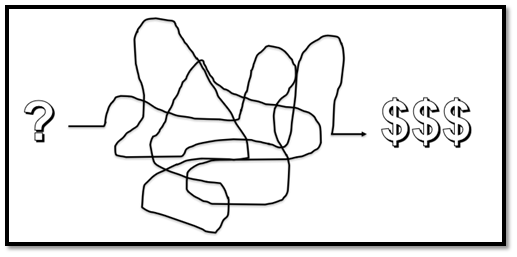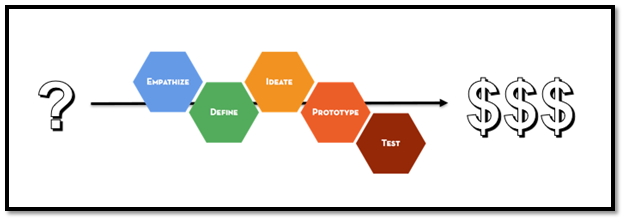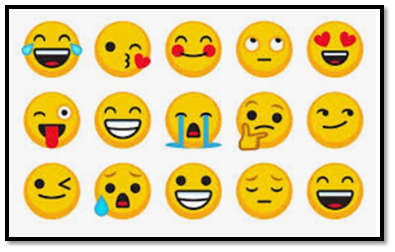Design Thinking Essay: Reflection on Weekly Learning
Question
Task: Write a reflective journal on computer architecture assignment analysing the theoretical concepts captured from the weekly material.
Answer
1.0 Introduction
Design Thinking refers to the designer's work that helps in extracting, teaching, learning, and application of human-centered techniques for solving complex issues more creatively and innovatively to the business, country, and personal life (Meinel&Von Thienen, 2016). Many big companies like Google and Apple have been applying design thinking for understanding various complex issues thus adopting a solution-based approach on the operational fronts. This report is a reflective essay and will entail strengths and weaknesses realized during the week's study on design thinking.
2.0 Self Reflection on Design Thinking Knowledge (Strengths and Weakness)
When I Heard about the design thinking approach, it did not sound interesting but I thought it to be a complex concept. However, each week's lecture helped to understand that design thinking can be used in business as well as in personal life for solving issues. It is a much-needed approach to solving ill-defined and complex issues. The design thinking approach creates new values that might be different and have a positive impact on problems encountered (Friis et al, 2017). I found the concept a bit confusing and could not immediately relate to issues that I encounter in my personal life.

Figure 1:How Designers View the Design Process
However, this weakness was strengthened in when I learned about the DT process that comprised five aspects like Empathize, define, ideate, prototype, and test.

Figure 2:Design Process
The design thinking process helped me strengthening my insights on how designing tools help in innovating. After encountering the problems, one should consider “what is” thereby considering aspects like journal mapping, value chain analysis, mind mapping while viewing the problematic situation as “what if” will include concept development and brainstorming. What is wow factor of the situation can be considered through assumption testing and rapid prototyping while thinking about might work aspects like a customer- co-creation and learning launch. Furthermore, various design thinking theories like Divergent and Convergent thinking, action research, logical reasoning, philosophical worldview, learning theory, and co-creation strengthened my concepts about design thinking (Kurokawa et al, 2015).
However, I faced issues in understanding other relevant theories that are ideation, left- brain- right brain, decision making, team working, conflicts related tasks, and relationships.Learning about the design thinking principles I learned the differences in how potential problems can be considered. We often encounter the problem and jump to an immediate solution for solving the issues. However, investigating the problem is equally important for gaining deeper insights for understanding the importance of solving the problems (Eines & Vatne, 2018). This will help in finding a competent and competitive solution for the problems encountered. Design thinking is related to understanding while also evaluating the user’s interaction with the products and services, thus helping to achieve innovation and sustainable growth through addressing the complex issues (Denning, 2013) As mentioned in Blog Entry week 5 23rd Aug 2020, activities made me happy as I was able to understand the concepts much better. Analysing the value chain as a tool of design thinking helps me in understanding the issues that pertained to specific projects (Luotola et al, 2017). The activities helped in gaining insights about the application of designing tools in an organizational context. This helped in clarifying the organizational infrastructure and diversified trajectories related to cross-functional collaboration.
In design-led research, ethical consideration becomes important in collecting the different types of data from several sources (Issdoerfer et al, 2016). As already mentioned in Blog Entry Week 6(30th August 2020), I was in-confident and had a feeling of uncertainty with activities and concepts like co-creation, phases of development, and ethical research. I was satisfied learning concepts related to empathy, ethics, and evaluations but I need to practice more for embedding the concepts in my personal life. In the class process of week ‘s learning (already mentioned in the blog post) I had confusion related to the concepts of co-creation and co-design. It was understood that co-creation was collective creativity associated with a project while co-design referred to the collaboration of the collective creativity by the designers.
The learning process of the week’s activity helped me in understanding the concepts related to rapid prototyping. It is a concept that includes understanding customer potential while designing marketing messages (Docherty, 2017). Rapid prototyping helps visualize the thoughts and use capabilities for presenting tangible products to the customers. However, as already mentioned in the Week 8 Blog Entry (14th Sep 2020), I need to learn more about this concept. As mentioned in the Week 10 (Blog Entry 1st Oct 2020), my design thinking, writing skills, blog writing, the reflective analysis was also sharpened. I gained insights and techniques about writing reflections, concept development, and blog posts.
3.0 Self Reflection on Design Thinking Skills (Strengths and Weakness)
Design Thinking activities during the Weeks’ learning helped in polishing several skills and capabilities. One of the skills that were strengthened during week’s learning was visualization, thus we encouraged for using imaginary visioners and transforming the same into images. I grasped different techniques of visualization like storytelling, using emoticons, metaphors, journey mapping, and others. The innovation stories and the Design Thinking process helped in sharpening my innovative skills. Some aspects of the DT process like Empathizing, defining, and ideating were polished however, that prototyping and testing were still weak. After the week's learning, I was to empathize with peers and ideate problems that I encounter however, the skills related to rapid prototyping were still weak. Before the week learnings, I always had problems in evaluating the solution of issues that I encountered routinely however, through the activities I can investigate the problems deeply and work on a solution-based approach.
The creative learning cycles taught us skills like imagination, creation, play, sharing, reflection, and imagination. I applied this learning when I cooked food for one of my friends, I empathized with him, imagining what he eats, creating and playing with ingredients, sharing the recipe, and reflecting the values. Thus, my skills for co-creating was polished, making me understand the products are services should move from firm centric and user-centric. Examples of different products like an intact baby blanket, Swiffer products helped me sharpen the skills related to the investigation of issues or problems. Digging deep into the problems helps in finding problems that might be different than the anticipated one, thus creating appropriate products and services.
As mentioned in week’s 5 (Blog Entry 23rd Aug 2020), working on journey mapping and brainstorming helped in exploring different aspects of design thinking tools that helped me in offering feasible solutions to complex issues. Since we are not working in a professional environment I usedempathetic understanding in building strong bonds with my peers. I can say, this skill needs to be developed more for evaluating the customer interaction with products to foster sustainable growth for the organization I will work in the future. I was engaged in the activity that required to draw diagrams on the computer and explain the same backed up the knowledge gained reading journal articles and textbooks. As mentioned in Blog Entry week 6 (30 Aug 2020), I was to prepare and brief about the value chain process in the health care sector through I was to use skills of planning, monitoring, diagnosing, interviewing, and recovering Skills related to collecting primary and secondary data sources are comparatively weak then planning and monitoring the activities. I am also nervous when I tried conducting interviews with my peers. I will aim in developing my research skills that will help in developing my professional career.

Figure 3: Use of Emoticons as Visualization, Principles
As mentioned,Blog Entry week 6 (30Aug 2020), the activities helped in improving the skills related design thinking process about the decision – making pragmatics. Thus,it will furtherhelp me is developing the project while ensuring appropriate and desired outcomes. The journey mapping skills were improved through different examples given by my teacher (also mentioned in Blog Entry week 5 23rd Aug 2020). Ethical thinking, research, and decision making an important part of the organizational decision-making process (Plattner et al, 2016). I have grasped the skill of mind mapping as I am actively involved in drawing the diagram of mind and concept development phases. The learning activities familiarized me with the varied application of interview and observation. I still lack the skills of collecting data through these methods and need further development in data analysis and assumption testing. I was encouraged to learn from the mistakes in the rapid prototyping activity that was organized in Week 8 (referring to Blog Entry 17th Sep 2020). In real-time scenarios, I can learn from my mistakes and improve them for enhancing my capabilities thus, this skill was strengthened in the learning module.
I have grasped the skills of co-creation through which my innovation capabilities and sharing responsibilities. (Blog Entry week 11 5th Oct 2020). The activities and lectures about Full- on Design thinking include several aspects like creativity and out of box thinking. I will aim in strengthening my skills related to out–of–box thinking and creativity for solving problems that are complexed. My listening skills was also enhanced as I carefully followed the instructions given by my tutor while conducting the activities. As mentioned in the week 10 (Blog Entry 1st Oct 2020), the activities helped in sharpening my skills of writing reflections, blog posts that will be helpful in career development. Each week’s study required us in reading through journal articles and textbooks that helped in reviewing the work done by the authors and understand the concepts more clearly. This also helped in the polishing skills of using different online technologies and databases.
4.0 Self Reflection on Design Thinking Mindsets (Strengths and Weakness)
The visualization principleshave helped me using different aspects like images, metaphors,storytelling for viewing the problems from a broader perspective, this has changed my attitude towards the complex issues thatI often face. Thus, helped in combining the texts with images that further helped in understanding the client requirements. Strengthening of visualization principles into components like what, howmuch, where, when, how and why will further help in professional and personal life. The human-centered and empathetic approach in week’s learning helped me in adopting the customer focus approach that will not only helpful in the professional environment but will help in understanding people better in personal relationships. The interview and observation methods adopted for conducting research will be helpful in planning and manufacturing products focusing on the needs and requirements of the customers (Glen et al, 2014).
Analysing needs and finding problems defines that identifies the issues and jumping to find a solution only addresses it superficially. Thus, my way of thinking has been modified as I now try to investigate issues in detail for understanding it better. I have also become open-minded regarding the job roles and responsibilities of the manager. If managers think like a designer'sproduct/ service production will include empathy, invention, and iteration helping the organization to build a competitive advantage over other firms in the industry. The various DT process that I grasped, shaped my mindset to think like a designer especially in professional life to achieving the highest customer satisfaction.
I also grasped quality products and services are a type of aesthetic features of design thinking that creates a lasting impression and helps in developingpreferences (already mention in week 12 BlogEntry). After indulging in week’s learning activities and learnings I assumed different scenarios like child care, office furniture that provides aesthetic and helps in retaining the customers. I gained knowledge about the real launch and learning launch but was incapable of shaping my mindset in alignment with these concepts (Blog Entry week 921st Sep 2020). I have attended to my problems and other issues while relating the concepts with real- time scenarios. The learning is very impactful in personal life as I learned to write blog posts and reflections. In free past times, I write down my experiences and problems that will help in shaping my personality and developing my mindset. Also, the activities performed created some kind of chaos in the class and disturbed the learning environment. I used to practice the activities as homework also to understand it better. Then I realized, I try to escape chaotic conditions and should work to manage if such problems occur in near future.
5.0 Conclusion and Action Plan
The report helped in analysing the skills, mindsets, knowledge that I have gained through the learning and activities from Week 1 to Week 12 in the context of design thinking. I have grasped that Design Thinking is an elicited process that helps in solving issues through a solution-based approach. Majorly all concepts related to design Thinking were cleared through each week's activities. My skills related to problem solving, innovations, creative thinking, journey mapping has been sharpened while I am still weak in prospects like visualization, ethical decision making, interviewing, and others. The week's learning shaped my mindset by encouraging me to view problems deeply, adapt open-mindedness, attentiveness while I still lack ethical decision-making mindsets. In the next 6 months, I will work hard and improve my weaknesses for improving my knowledge, skill sets, and mindsets.
To strengthen visualization and ideation, I will apply critical thinking and other design thinking process. I will read through various resources and attend webinars for learning about ethical collection and analysation. Several business laws and library resources will help me in clarifying my concepts regarding ethical decision making. Interviewing, observation, and empathy could be strengthened through effectivecommunication and increased interaction with my peers and other individuals. The concepts of rapid prototyping will be strengthened by applying the concepts and practicing them in real-time scenarios. For instance, I should learn from the mistakes that I make and try not to repeat them. I will also clear concepts about real and learning launch by reading more about it and practicing the activities done in the week.
|
Weakness Identified |
Actions to be taken |
Timeline |
|
Struggling to show empathy and need analysis |
Indulge in verification habit for everything I listen about from today before forming any opinion or assumption. Practice emotional detachment while taking any decision regarding professional or personal life. |
In next six months |
|
Difficulty in forming prototype of complex design |
Form a plan for every idea that I form in near future for solving any personal and professional problems. Indulge in reading activity of academic materials to gain insight into five stages of prototyping process. |
In next six months |
|
Inability to indulge in brainstorming process during idea development |
Indulge in effective thinking activity in every situation to develop thinking abilities. Give more and more ideas in every personal communication with friends and families to develop idea generation ability. |
In next six months |
|
Lack of in-built critical thinking ability |
Question in every situation to indulge in deep understanding of situation. Reflect on daily learning activities to evaluate situation from every perspective. Become a self-critic of my own thoughts and actions. Indulge in active listening habits that allow analyzing the situation from different perspectives. |
|
6.0 References
Denning, P. (2013). Design thinking. Communications of the ACM, 56(12), 29-3
Docherty, C. (2017). Perspectives on Design Thinking for Social Innovation. The Design Journal, 20(6), 719-724
Eines, T., & Vatne, S. (2018). Nurses and nurse assistants’ experiences with using a design thinking approach to innovation in a nursing home. Journal of Nursing Management, 26(4), 425-431.
Friis, R., Teo, D., and Siang, Y. (2017).Design Thinking: A Quick Overviewhttps://www.interaction-design.org/literature/article/design-thinking-a-quick-overview (Accessed 08 Oct 2020).
Glen, R., Suciu, C., and Baughn, C. (2014) ‘The need for design thinking in business schools’, Academy of Management Learning & Education, Vol. 13 No. 4, pp. 653-667.
Issdoerfer, M., Bocken, N., & Hultink, E. (2016). Design thinking to enhance the sustainable business modelling process – A workshop based on a value mapping process. Journal of Cleaner Production, 135, 1218-1232.
Kurokawa, T. (2015). Service design and delivery: How design thinking can innovate business and add value to society (First ed., Service systems and innovations in business and society collection).
Luotola, H., Hellström, Gustafsson, & Perminova-Harikoski. (2017). Embracing uncertainty in value-based selling by means of design thinking. Industrial Marketing Management, 65, 59-75.
Meinel, C., & Von Thienen, J. (2016). Design Thinking. Informatik-Spektrum, 39(4), 310-314.
Plattner, H., Meinel, C., Leifer, L., & SpringerLink. (2016). Design Thinking Research Making Design Thinking Foundational (Understanding Innovation).












